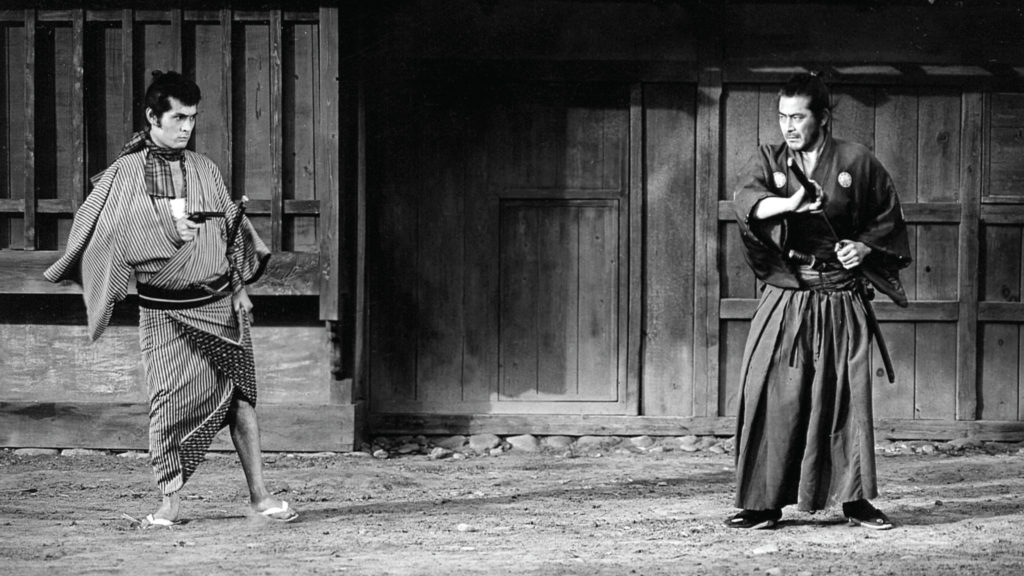
How does one describe the movie Yojimbo? This Akira Kurosawa samurai film contains so many striking images that it’s impossible to pick just one. In Yojimbo, a dog trots down the main street of a deserted town carrying a human hand in its mouth. The town itself is an urban warzone between the private armies of a silk dealer and a sake merchant located on opposite sides of the village.
Outside of town, a traveling ronin throws a stick into the air and picks his destination by the direction it falls. When that same ronin is asked his name upon arrival, he looks out the window, sees a mulberry field, and calls him “Kuwabatake Sanjuro.” This blatantly false alias translates to “30-year-old mulberry field.” Ordinary townsfolk crouch behind closed shutters and locked doors, waiting for the chaos to end.
Yojimbo tells the story of an eccentric ronin, a town devolving into one massive gang war, and a high-stakes scheme to stop the conflict—and make a lot of money in the process. It’s a situation where there are no good guys, so the bad guys are attacking each other. As the movie unfolds, it becomes clear that almost no one in town is innocent, and the viewer must wonder if anyone is worth saving.
The film was possibly inspired by Dashiell Hammett’s novel Red Harvest and is certainly influenced by the principles of the western genre. In Yojimbo, the wind-swept main street could be any frontier town, the ronin a wandering gunslinger, and the terrified townsfolk could be from any Ford’s movie. Roger Ebert noted that Sergio Leone’s A Fistful of Dollars (1964), starring Clint Eastwood, was so similar to Yojimbo that homage blurred into plagiarism.
Comments aside, Yojimbo is one of the greatest movies of all time. The protagonist’s strategy is to hire himself out as a bodyguard, advertising his services first to one side and then the other, and keep the bidding fierce while doing no actual bodyguarding at all. It’s an elaborate chess game in which he plays for neither side and plans instead to win the board for himself.
This set-up has been a tremendous source of inspiration for Tale of Ronin. The goal is to create a dynamic world with unique situations just like the one in Yojimbo, where the player can choose a side or try to pull one over everyone else. When the Numata and Otatsu yakuza groups clash, staying neutral isn’t an option. Gamers can influence the outcome of this conflict, just like they can the fate of the Black Lotus rebels or various Tokugawa bakufu officials.
The most discussed pillar of the game is that the world reacts to the player’s choices. Tale of Ronin’s setting is designed to represent how it feels to be a ronin, with no forced moral code and no urgency to save a world that often seems rotten.